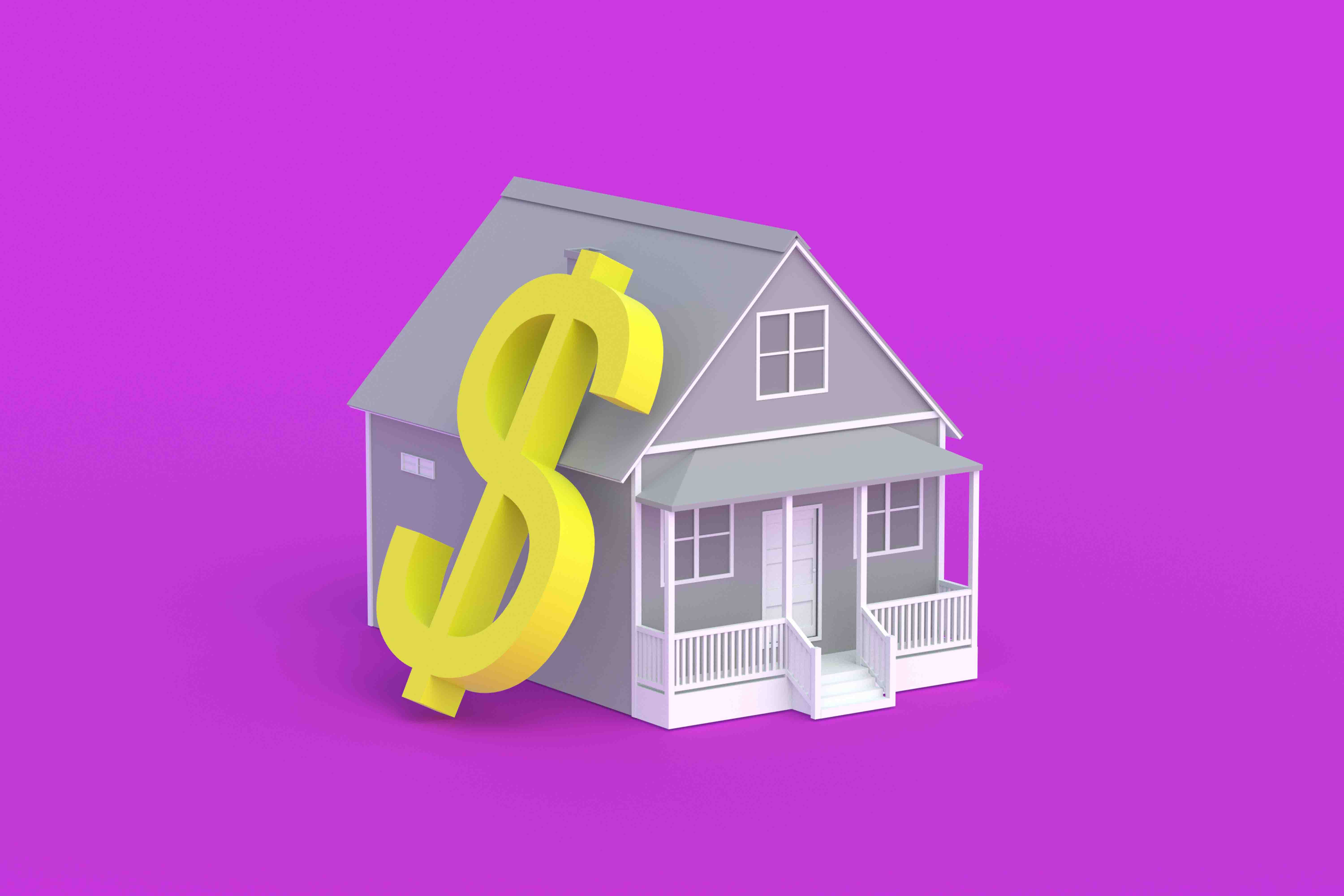Mortgage Rates and Payments Keep Rising, Creating Market Misery
Current mortgage rates continue to rise and record payment rates combine to create a glum market.


Since September of 2023, the Federal Reserve has held the federal funds rate, a key overnight bank lending rate, at unchanged levels. Previously, there were 11 rate hikes that began in March 2022 in an attempt to combat inflation, which has caused consumers to face higher commercial interest rates, especially mortgage rates. But good news for borrowers — interest rate cuts are expected for later this year.
Although mortgage rates are largely dependent on the 10-year Treasury yield and not the federal funds rate, they've started to come down. According to Freddie Mac, as of March 20, the most recently available data, the average 30-year mortgage rate was 6.74%. There have been declines totaling almost a quarter of a percentage point over the last two weeks. Despite the recent dip, mortgage rates remain high.
However, as many expected, the Federal Reserve held interest rates steady at the latest meeting in March, following four previous rate pauses. This means that the federal funds rate will remain the same, at a target range of 5.25% to 5.5%. And the Fed is still expected to cut rates later this year.

Sign up for Kiplinger’s Free E-Newsletters
Profit and prosper with the best of expert advice on investing, taxes, retirement, personal finance and more - straight to your e-mail.
Profit and prosper with the best of expert advice - straight to your e-mail.
“Recent statements from top Fed officials that inflation is inching closer to the Fed’s 2% target level likely means that further interest rate increases will remain on hold for now. This also supports the growing expectations that the Fed will begin lowering interest rates at some point in 2024, though the timing remains uncertain," says Michele Raneri, vice president of U.S. research and consulting at TransUnion. "The prospect of future rate reductions is particularly important at a time when US consumers continue to take on historically high levels of debt, particularly on credit cards, as lower interest rates may allow for some of them to refinance that debt and put more money in their pockets."
Along with food, energy and real estate prices remaining high, home ownership can feel extremely challenging at the moment. As a result, many first-time buyers are backing out of the market altogether. For current homeowners, a survey from Redfin reveals that in March, mortgage payments hit the highest they've ever been. The results showed the typical homeowner paying $2,563 on mortgage payments, 29% higher than they'd have paid in 2022.
Not surprisingly, the latest Home Purchase Sentiment report from Fannie Mae shows that a decline of 3.6 points saying "the decline was partly driven by a substantial decrease in consumers’ sense of home-selling conditions."
How to get the lowest rate
Follow these tips to shop for low mortgage rates.
- Increase down payment: The bigger the down payment you make on a house, the better your rate. To qualify for the lowest rates you’ll likely need a 20% down payment.
- Raise credit score: The most important factor in determining your mortgage rate is your credit score. The higher your score, the less risk you pose to lenders, so it’s important to raise your credit score as much as possible before applying for a mortgage. Typically, you’ll need to have a FICO score of 760 or higher in order to be eligible for the lowest rates.
- Consider an adjustable-rate mortgage: An adjustable-rate mortgage (ARM) starts out with rates lower than those you’d get with a fixed-rate mortgage. After a certain time period, the rates will adjust based on market indexes. If you know you will be selling your home in the future, this could be a good option to save on interest.
- Shop around: It’s important to get multiple quotes before applying for a mortgage, and you can often find lower mortgage rates from local lenders and credit unions. Try a mortgage comparison tool to find the best rates for you.
Related Content
Get Kiplinger Today newsletter — free
Profit and prosper with the best of Kiplinger's advice on investing, taxes, retirement, personal finance and much more. Delivered daily. Enter your email in the box and click Sign Me Up.

Erin pairs personal experience with research and is passionate about sharing personal finance advice with others. Previously, she was a freelancer focusing on the credit card side of finance, but has branched out since then to cover other aspects of personal finance. Erin is well-versed in traditional media with reporting, interviewing and research, as well as using graphic design and video and audio storytelling to share with her readers.
-
 6 Stunning Waterfront Homes for Sale Around the US
6 Stunning Waterfront Homes for Sale Around the USFrom private peninsulas to lakes, bayous and beyond, Kiplinger's "Listed" series brings you another selection of dream homes for sale on the waterfront.
By Charlotte Gorbold Published
-
 Six Reasons to Disinherit Someone and How to Do It
Six Reasons to Disinherit Someone and How to Do ItWhether you're navigating a second marriage, dealing with an estranged relative or leaving your assets to charity, there are reasons to disinherit someone. Here's how.
By Donna LeValley Published
-
 5 Reasons Millionaires are Renting Instead of Buying
5 Reasons Millionaires are Renting Instead of BuyingHomeownership isn’t for everyone, even millionaires. Discover why wealthy individuals choose to rent instead of buy, from financial flexibility to investment strategies.
By Dori Zinn Published
-
 CPI Report Puts the Kibosh on Rate Cuts: What the Experts Are Saying About Inflation
CPI Report Puts the Kibosh on Rate Cuts: What the Experts Are Saying About InflationCPI Consumer price inflation reared its ugly head to start the year, dashing hopes for the Fed to lower borrowing costs anytime soon.
By Dan Burrows Published
-
 Fed Leaves Rates Unchanged: What the Experts Are Saying
Fed Leaves Rates Unchanged: What the Experts Are SayingFederal Reserve As widely expected, the Federal Open Market Committee took a 'wait-and-see' approach toward borrowing costs.
By Dan Burrows Published
-
 CPI Report Keeps the Fed on Track: What the Experts Are Saying About Inflation
CPI Report Keeps the Fed on Track: What the Experts Are Saying About InflationCPI Disinflation in key areas of consumer prices should help the Federal Reserve stick to its policy path of gradual cuts to interest rates.
By Dan Burrows Published
-
 Blowout December Jobs Report Puts Rate Cuts on Ice: What the Experts Are Saying
Blowout December Jobs Report Puts Rate Cuts on Ice: What the Experts Are SayingJobs Report The strongest surge in hiring since March keeps the Fed on hold for now.
By Dan Burrows Published
-
 Will 2025 Be a Good Year to Sell Your House?
Will 2025 Be a Good Year to Sell Your House?Explore whether 2025 is the right time to sell your home. Learn about trends in mortgage rates, home prices, buyer demographics and economic factors shaping the housing market.
By Carla Ayers Last updated
-
 Should You Buy a Vacation Home?
Should You Buy a Vacation Home?If you vacation to a beloved destination again and again, purchasing a home there may be a smart move — but don’t overlook the costs and effort that go into it.
By Emma Patch Last updated
-
 Fed Sees Fewer Rate Cuts in 2025: What the Experts Are Saying
Fed Sees Fewer Rate Cuts in 2025: What the Experts Are SayingFederal Reserve The Federal Reserve cut interest rates as expected, but the future path of borrowing costs became more opaque.
By Dan Burrows Published